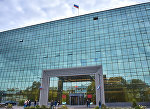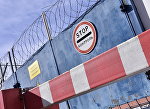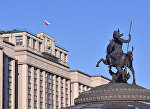WASHINGTON, March 4 – RAPSI. A bipartisan group of US senators reintroduced a law aiming to vest all federal courts with the authority to open proceedings to television and radio broadcasts.
While introducing the bill to senate last week, Senator Chuck Grassley justified his decision to sponsor it on the basis of transparency and the public policy goal of fostering a popular understanding of courtroom proceedings: “Openness in our courts improves the public's understanding of what happens inside our courts. Our judicial system remains a mystery to too many people across the country. That doesn't need to continue. Letting the sun shine in on federal courtrooms will give Americans an opportunity to better understand the judicial process. Courts are the bedrock of the American justice system. I believe that granting the public greater access to an already public proceeding will inspire greater faith in and appreciation for our judges who pledge equal and impartial justice for all.”
In the US, different rules of procedure govern the broadcast of proceedings in state and federal courts. Currently, television and radio broadcasts are prohibited in US federal courts.
Many states allow media outlets to broadcast proceedings within their own courts. Speaking on the Senate floor during the bill’s introduction last week, Senator Grassley noted that: “Nineteen states allow news coverage in most courts; sixteen allow coverage with slight restrictions; and the remaining fifteen allow coverage with stricter rules,” asserting that only the District of Columbia prohibits coverage of all trial and appellate court proceedings.
The text of the law submitted by Grassley and his co-sponsors stipulates that appellate and district court judges would be entitled to broadcast proceedings so long as the decision to do so wouldn’t infringe upon the due process rights of any parties involved.
The bill further provides that the Judicial Conference of the United States (JCUS), a group of America’s highest ranking judges mandated by Congress to develop professional guidelines, will be empowered to draft a set of guidelines that judges must take into account when considering granting permission for broadcasts of a given proceeding: “Judicial Conference of the United States may promulgate advisory guidelines to which a presiding judge, at the discretion of that judge, may refer in making decisions with respect to the management and administration of photographing, recording, broadcasting, or televising…”
Notably, the JCUS vocally opposed a 2007 bill aimed at expanding the use of cameras in the federal courtroom, stating in a brief submitted for a House of Representatives debate on the matter: “Since the infancy of motion pictures, cameras have had the potential to create a spectacle around trial court proceedings.”
In its brief for the same, also in opposition to the bill, the US Department of Justice (DOJ) agreed with the point advanced by the JCUS, adding, “You do not have to go far back in history to find criminal trials that were televised where grandstanding and the glare of lights created a [circus] atmosphere.” (Internal quotes omitted).
Speaking at the 2007 hearing on behalf of the JCUS, District Judge John R. Tunheim describe the negative impact that cameras might have both on the actions of the parties and other players involved in courtroom proceedings, as well as in terms of privacy concerns: “Appearing on television could lead some trial participants to act more dramatically, to pontificate about their personal views, to promote commercial interests to a national audience, or to increase their courtroom actions so as to lengthen their appearance on camera. The use of cameras in the trial courts could also raise privacy concerns and produce intimidating effects on litigants, witnesses and jurors, many of whom have no direct connection to the proceeding.”
Variations of the present bill have consistently failed to be enacted, but perhaps Grassley will have better luck this year.



